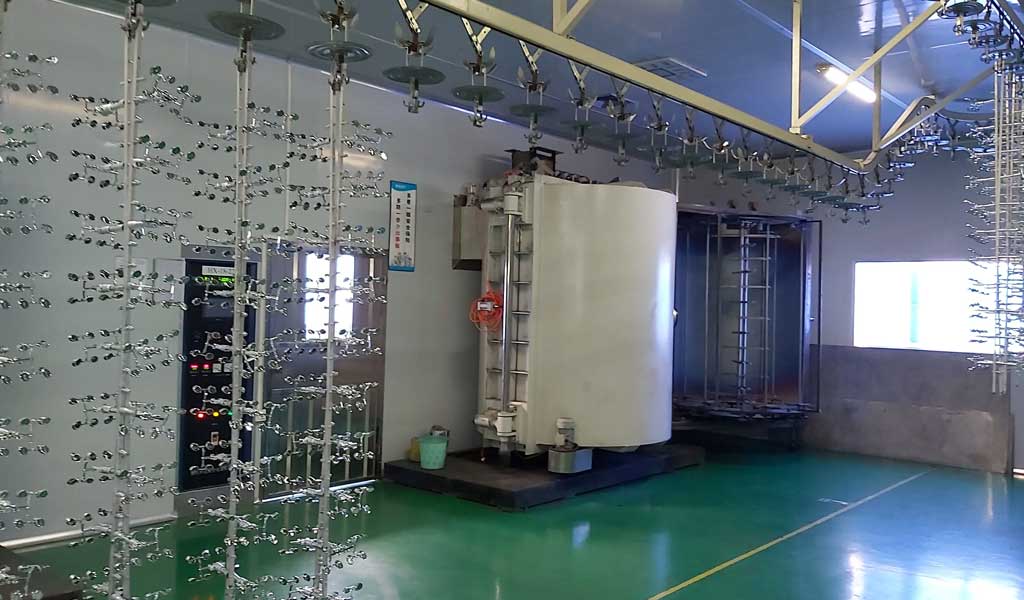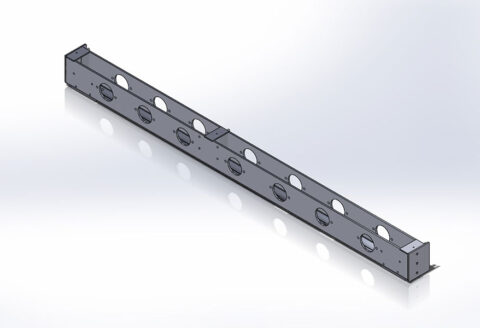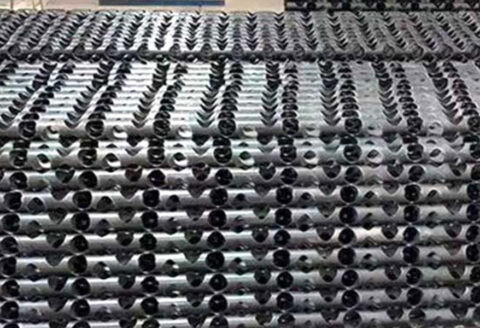
By optimizing the coating process and coating composition of the fine-blanking die surface, the comprehensive performance of the coating is improved, and the service life of the blanking die is effectively improved. The performance of titanium nitride and titanium aluminide coatings were compared. After improvement, the microhardness of the titanium aluminide coating reached 3200HV0.05, and the coefficient of dry friction to steel dropped to 0.30-0.35. At the same time, the average service life of fine vacuum coating process of blanking dies has been increased by 35.5%. The titanium aluminide mold components are punched under high pressure and high temperature (shear cut) conditions. The improvement of the life of the concave and convex dies in the fine blanking forming mold has always been the focus of engineering technology research. The use of physical vapor deposition technology in the surface treatment technology of mold materials prepares a titanium-containing compound strengthening layer with a thickness of about 3-5 μm on the surface of the workpiece to increase its service life. This paper studies a new coating process technology to improve the service life of fine blanking dies by improving the process.
The failure mode of the mold
The main form of failure of the male and female molds on the Finetool fine-blanking machine is oxidative wear. The high temperature and corrosive medium (lubricant) of fine blanking make the firework wear of the mold aggravated. During high-speed punching, the strengthened surface layer of the mold surface is destroyed, causing serious adhesion and friction on the metal surface. On the blanking cold-rolled steel plate and quenched and tempered steel plate, there are end face wear and crescent wear, as well as comprehensive forms of wear. These wear defects lead to a sharp decline in the service life of the mold and an increase in the failure rate. At the same time, failures such as mold repair and shutdown will bring greater economic losses.
The choice of mold material
In the initial design, S6-5-3 is the preferred material. S6-5-3 belongs to the German tungsten-molybdenum series ductile high-speed tool steel. The steel has fine and uniform carbide particles, has the characteristics of copper stamping resistance, high toughness, good thermoplasticity, excellent cutting performance, and good wear resistance. In particular, it can withstand high temperatures around 600°C, is not easy to soften, has good red hardness, and its hardness can reach 64HRC; and practice shows that its wear resistance is about 2 times higher than that of high chromium steel, and its toughness is about 1.5 times stronger.
Vacuum Coating Process
- Surface treatment: Usually, the base material (plated parts) should be degreasing, dust-removing and other pretreatments before coating to ensure the neatness and drying of the plated parts, and avoid the defects such as pitting and poor adhesion of the primer layer. For special materials such as PE (polyethylene) materials, they should also be modified to achieve the expected effect of coating.
- Primer coating: during primer construction, spray coating or dip coating can be used, depending on the size, shape, structure, user equipment and other specific conditions of the plated parts, as well as the quality requirements of the housekeeper. If spraying method is used, Sz9 non-coating oil can be used; if dipping method is used, SZ-97, SZ-97+1 and other oils can be used.
- Primer drying: Sz7 coating oil series are all self-drying paints. The purpose of drying is to improve production efficiency. Usually the drying temperature is 60-70oC for about 2 hours. The requirement for drying is that the paint film is completely dry.
- Coating: When coating, ensure that the vacuum degree of the coating machine meets the requirements, then heat the tungsten wire and strictly control the coating.
- hot time. At the same time, the metal used for coating should be mastered well (for example, the amount of aluminum wire is too small, which may cause the metal film to not cover the substrate too much, which will affect the life of the tungsten wire and the quality of the coating in addition to waste.
- Top coating: Usually the purpose of top coating has the following two aspects: A. To improve the water resistance, corrosion resistance and wear resistance of the plated parts; B. To provide the possibility for water dyeing and coloring. Sz97 oil series products can be used for surface coating. If the plated parts do not need to be colored according to customer requirements, 911, 9111 matte matte oil, 889 transparent oil, 910 matt oil and other surface oils can be used for coating.
- Top coat drying: Usually the top coat is thinner than the base coat, so the drying temperature is about 50-600°C for about 1~2 hours. Users can grasp it according to the actual situation, and finally ensure that the top coat is completely dry. If the plated parts do not need to be colored, the process is over.
- Water dyeing and coloring: If the plated parts need to be water dyed and colored, the plated parts that have been dried with the topcoat can be put into the dyeing vat to dye the desired color, and then rinsed and dried. When dyeing, pay attention to control the temperature of the water, usually around 60~80σc, and control the time of water dyeing. The disadvantage of water dye coloring is that it is easy to fade, but the cost is lower
- Oil dyeing and coloring: If the plated parts need to be oil dyed and colored, it can be directly dipped or sprayed with sz-matte color oil or SZ transparent color oil after coating according to customer requirements. The color of oil dyeing is durable and the cost is slightly higher than that of water dyeing.


